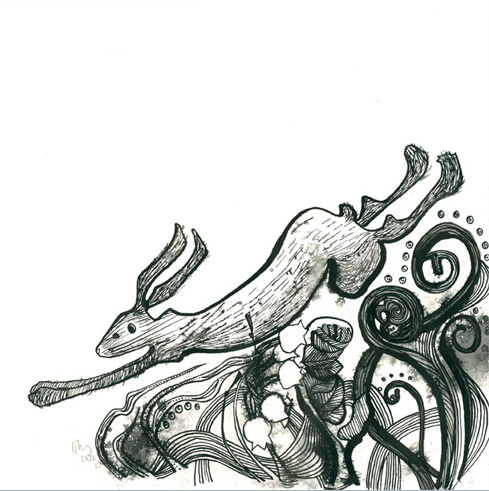It is the beginning of a new month so I turn to my seasonal reading again. In his book The English Year, Steve Roud’s chapter on March is preoccupied with the weather. March “comes in like a lion and out like a lamb”. Or here’s another: “First comes David, then comes Chad, and then comes Winneral as though he were mad,” signifying that the first three days of March will be stormy. St David’s day is the 1st March, St Chad’s the 2nd, and St Winneral’s the 3rd. From the 19th March (St Joseph’s Day) it is apparently safe to put away your warming pan for the year. It was also thought that March borrowed three days from April and vice versa, hence there would be three fine days in March and three stormy days in April. Interestingly Roud says France and Spain have similar beliefs about Borrowed Days.
March forms the threshold between winter and spring so it is easy to see why traditional beliefs about the weather abound at this time of year. After a long cold winter we’re all desperate for spring, which must have been all the more true when most of the British population scraped a living from the land. Stephen Moss describes the same sort of yearning in his book Wild Hares and Hummingbirds. He says, “As the vernal equinox approaches…people all over Britain are expectantly awaiting a sign – any sign – that marks the arrival of spring.”
I have installed an app on my phone that tells me what time sunrise will be in my location. I’m delighted to announce that tomorrow the sun will be up at 7.07am. I have gained a whole 44 minutes since the 9th February. Spring really is on the way. Those precious extra minutes of light and warmth aren’t just working their magic on me. Moss describes Zugunruhe (“migratory restlessness”) starting to creep over the brains of billions of birds across the globe, triggering them to travel huge distances to return to the places they were born. I know I won’t be the only person eagerly anticipating the sight of my first swallow, wondering fretfully what storms may have waylaid them when they seem overdue.
Moss highlights several other natural harbingers of spring. He describes the “black, sticky” buds of the ash tree, the song of the dunnock, and if you’re very lucky, a sighting of a mad march hare. How will you mark the coming of spring? Perhaps you put a leek in your hat for St David’s Day on the 1st, or you plan to wear a shamrock for St Patrick’s Day on the 17th. Whatever you do, make sure you don’t forget Mothering Sunday (or Mother’s Day if you prefer) on 15th March. According to Roud, a honey-based drink, not dissimilar to mead, was traditionally drunk on Mothering Sunday. That’ll be me come the 15th then, gently supping my mug of mead with my breakfast in bed!







